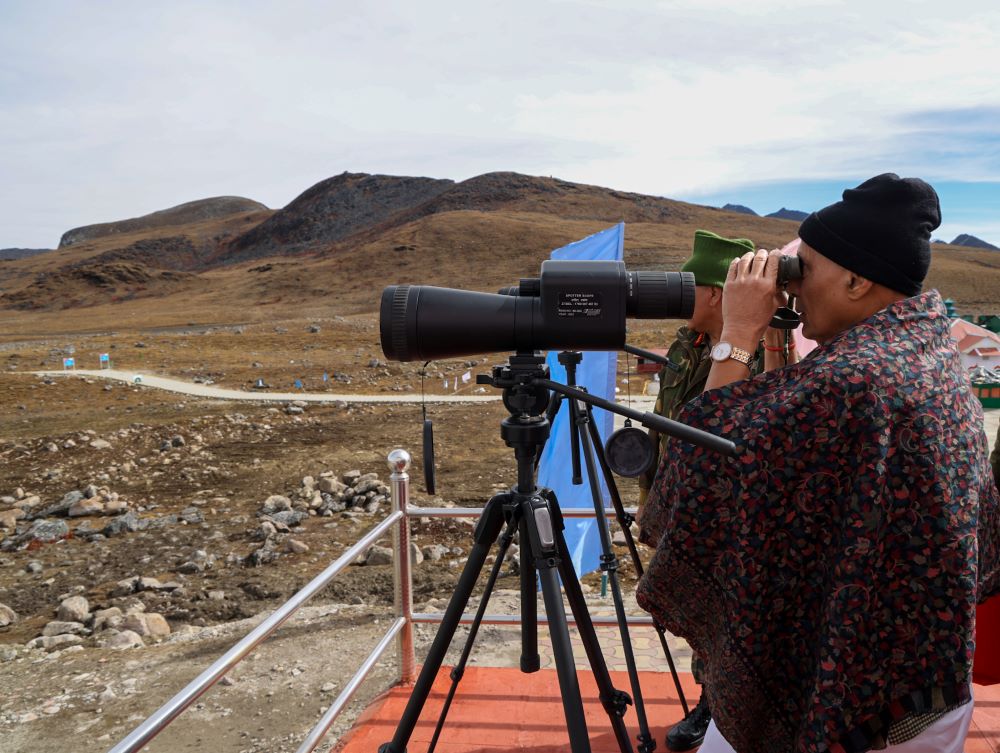In an age where technology is increasingly linked with military power, the Indian Army’s formation of the Signals Technology Evaluation and Adaptation Group (STEAG) signifies the nation’s dedication to enhancing its defence capabilities amidst emerging threats
 KRC TIMES Desk
KRC TIMES Desk

In an age where technology is increasingly linked with military power, the Indian Army’s formation of the Signals Technology Evaluation and Adaptation Group (STEAG) signifies the nation’s dedication to enhancing its defence capabilities amidst emerging threats. This elite unit, responsible for researching and evaluating state-of-the-art communication technologies, signifies a strategic advancement in leveraging innovation for national security. As warfare evolves, influenced by progress in fields like artificial intelligence, quantum computing, and 6G communication, conventional defence strategies become insufficient. Acknowledging this, the Indian Army has actively adopted the necessity of staying ahead by investing in technologies that could reshape modern warfare.
STEAG’s mission involves a dual commitment to cultivate domestic technological abilities and to build partnerships with academia and industry. This strategy aligns perfectly with the principles of Atmanirbhar Bharat and Start-Up India, highlighting the significance of self-sufficiency and innovation in propelling national development. By encouraging cooperation among defence establishments, research institutions, and entrepreneurial initiatives, STEAG aims to accelerate the creation of indigenous solutions tailored to the armed forces’ unique needs. At the heart of STEAG’s mission is the exploration of a wide range of technological areas, from software-defined radios to quantum technologies. This multifaceted approach demonstrates a keen understanding of the complex challenges presented by modern warfare, where victory depends not only on weapon lethality but also on the flexibility and robustness of communication networks. In this regard, the focus on electronic warfare systems and mobile communications emphasises the need to maintain an informational edge on the battlefield. Furthermore, the establishment of STEAG marks a significant stride towards democratising access to high-end communication technologies. These domains have historically been dominated by a few countries with advanced research ecosystems and substantial economic resources. By fostering domestic capabilities and encouraging technology transfer, STEAG aims to level the playing field, enabling India to assert its strategic independence in an increasingly disputed geopolitical environment.
In practical terms, STEAG’s importance goes beyond defence readiness. In a time characterised by swift technological convergence, the innovations nurtured within its confines could trigger a wider socio-economic transformation. From facilitating remote healthcare to improving disaster response capabilities, the uses of advanced communication technologies are diverse. By investing in these frontier domains, the Indian Army not only strengthens its defence stance but also paves the way for a more resilient and inclusive society.
However, to fully realise STEAG’s potential, continuous commitment and investment from all stakeholders will be necessary. The journey from lab prototypes to field-ready solutions is filled with obstacles, from technological constraints to regulatory barriers. In this scenario, the Government must provide the necessary policy support and funding mechanisms to nurture domestic innovation. Moreover, cultivating a culture of collaboration and knowledge exchange will be vital to harnessing the collective expertise of academia, industry, and the armed forces. The road ahead for STEAG won’t be without challenges. The recruitment and retention of top talent in these specialised fields will be critical.
The current regime has consistently provided unwavering support to the Army across all fronts. Ample funding and resources are at the disposal of the Army. In today’s world, warfare has transcended conventional norms, demanding that the nation invest wisely and innovate strategically to safeguard against any potential enemy incursions. In the current context, the establishment of STEAG marks a pivotal moment in India’s pursuit of technological self-reliance and strategic autonomy. By recognising innovation as a force multiplier, the Indian Army reaffirms its commitment to safeguarding the nation’s interests in a time of significant geopolitical change. As STEAG embarks on its mission to explore the frontiers of communication technology, it carries the hopes and aspirations of a nation ready to claim its rightful position on the global stage. The formation of STEAG is a courageous move in the right direction. With continued focus, collaboration, and investment, STEAG can herald a new era of technologically advanced defence for India.






